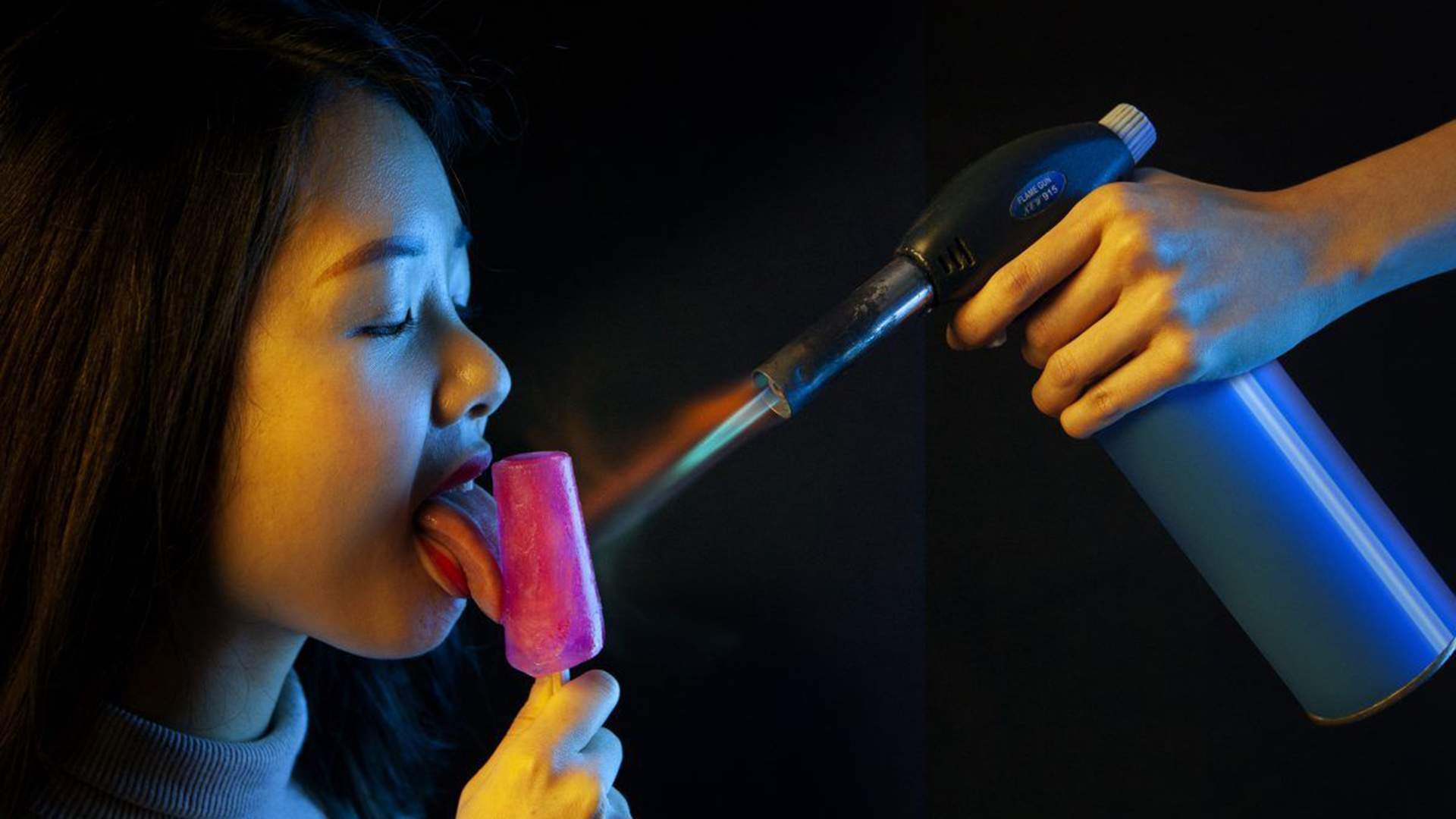Food Artists Bompas & Parr Have Invented Non-Melting Icy Poles
They "last immeasurably longer than conventional ice lollies", and if they prove a hit, the London-based outfit will look at rolling out the desserts in supermarkets.
Summer might still be months away, but one of the season's main bugbears now has a solution. As everyone that's enjoyed an icy cold popsicle on a sweltering day knows, frozen sweet treats come with their own inbuilt game — can you lick your way through your icy pole fast enough to avoid getting covered in watery drips?
The answer is no, of course — until now. Dripping icy poles might become a thing of the past thanks to food artists Bombas & Parr, who've unveiled what they're calling the world's first non-melting ice lolly.
Their creation finds its basis in a substance that dates back seven decades, and one you probably haven't heard of. During World War II, inventor Geoffrey Pyke came up with pyrkete, a frozen composite material made with a combination of sawdust and wood pulp dispersed in ice. It was originally part of his lofty dreams to build a floating runway that could be used in the middle of the ocean during battle — all made of ice. The structure didn't end up eventuating, but his idea gave Bombas & Parr their starting point all these years later.
Bombas & Parr's version doesn't use any wood-related materials, but is made with edible fruit fibres instead. The London-based outfit says their pykrete-inspired icy poles "last immeasurably longer than conventional ice lollies", and if their experiment goes down a treat, they'll look at rolling out the desserts in supermarkets.
For now, those wanting to give the ice blocks a try will need to be in London, and will also need to visit Bompas & Parr's current SCOOP: A Wonderful Ice Cream World exhibition. On August 22, attendees will be able to buy and try the non-melting icy poles, and offer their feedback.
And if you're wondering about ice creams with the same properties, they're already a thing thanks to researchers in Japan.





